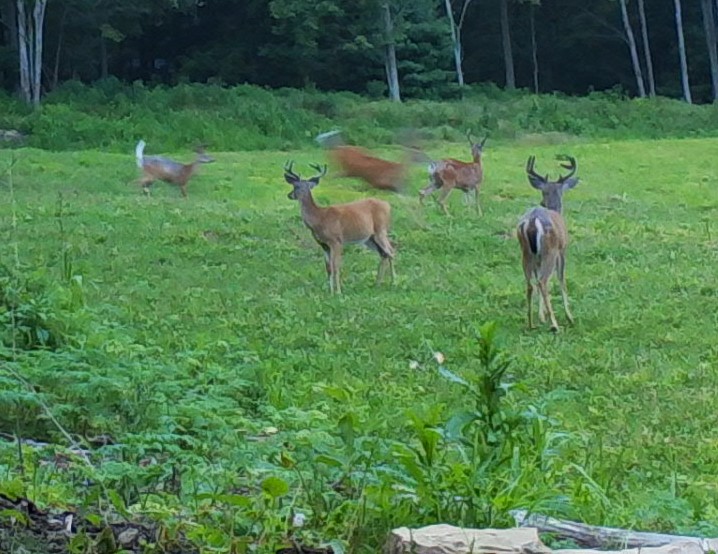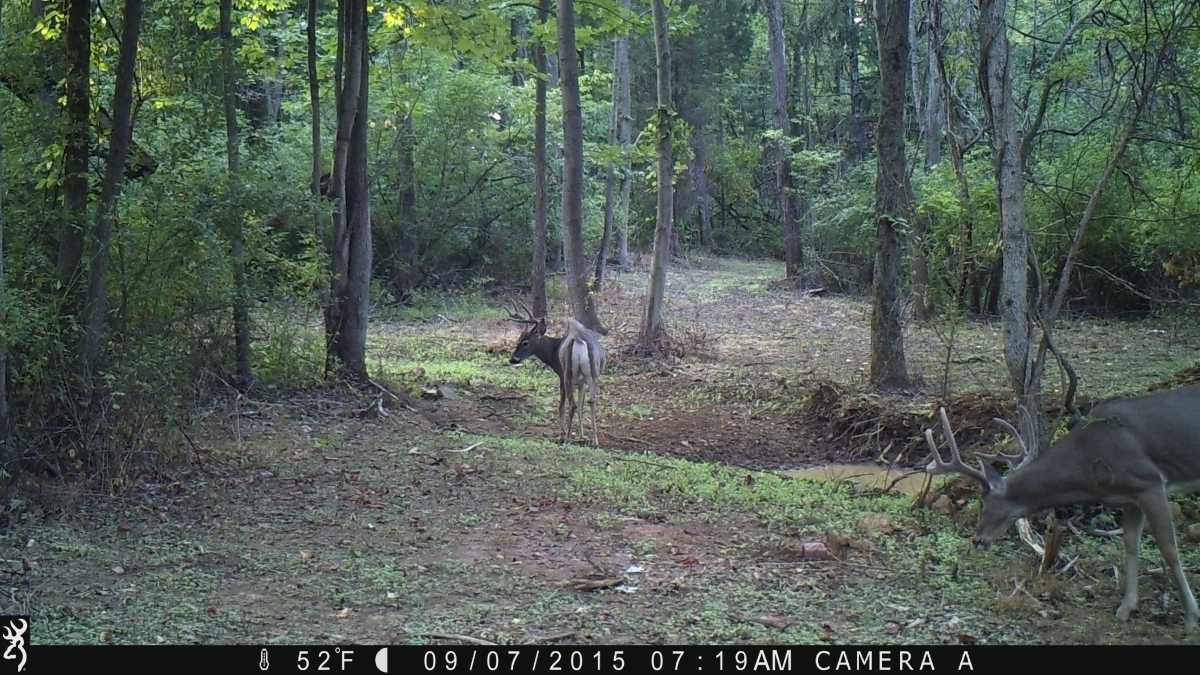The Top 5 Habitat Improvements to Attract Deer and Improve Hunting Are:
- Food Plots
- Thickets
- Travel Corridors
- Scrapes and Licking Branches
- Water Holes
Food Plots For Deer and Turkeys
Everyone knows food plots are the ticket when it comes to attracting deer and turkey. Although food plots are not the be all and end all of habitat improvement, they are essential improvments that will cause deer to show up in predictable movement patterns and help increase populations and keep deer on your property.
Strategic placement of food plots in such a way as to pull deer from one area to another and keep them on your property during daylight hours is important if you want to influence the herd in your area.
Food plots take a major commitment of time and expense at first but can be fairly easy to maintain either by hiring the annual maintenance or getting some equipment to do the work yourself.
What to plant is beyond the scope of this article but always keep in mind that it is more important to have the best most nutritious food in the fall and early winter when deer hunting takes place. If you have that, you have it made. Growing the biggest turnips or the greenest patch of clover if great but they are not always the best chow in the neighborhood in November and December.
Food plots should be placed in the best soils on your property but at the same time, need to be where deer wont be spooked out of them when you enter the land to hunt. If you can get in and out without detection and hunt travel routes to and from the food, you will be more successful. Placing food plots in one area and creating bedding or keeping a sanctuary area for bedding at another location allows you to pull deer from their daytime hideouts to evening food. Hunt them in between and resist the temptation to hunt the food plots themselves, lest you turn deer nocturnal and never see older age class bucks.

Creating Thickets for Deer Cover
Thickets can exist on the property when you buy it or it can be created. A swamp, old clearcut, invasive brush, native grassland can all be good daytime cover. If you have wide open woods with no low growth, you need to create some if you want deer to stick around.
Chainsaw work, logging with a good consulting forester who understands deer habitat needs is probably the most important habitat work you can do on your property. Creating horizontal cover and browse will provide a place for deer to feel safe and bed down all day – able to get up to browse throughout the day is important. Deer may go to a particular spot to spend the day but they always get up and move around every few hours and feed. They prefer places where there is some browse available. So, when you create switchgrass cover, for instance, include some food in that field. Same with softwood plantings.
Creating Deer Travel Corridors
You can have the greatest food plots and bedding cover but if you don’t know where deer will walk, you can’t kill one. Figure out how deer use the terrain and how they general get from one place to the other and where they are not traveling and you can enhance and funnel the travel routes with blocking by cutting trees, providing cover to move through and area undetected (or so they think) and providing attraction such as licking branches, food, mineral and water.
Creating a trail by cutting trees and laying them out perpendicular to the trail is a good practice, as long as deer want to generally go that way anyway. Its a waste of effort if deer have no reason to travel there. For instance, you know that deer bed on a ridge and there is an elevator ridge going down the slope perpendicular to the main ridge, look for some sign showing you that deer use that side ridge to take the path of least resistance down to the feeding areas below. Or, along a wide mountain ride or a saddle or dry land between two swamps, around a steep ravine into the side of a mountain – look for natural travel routes and create corridors by enhancing and focusing travel where you are able to hunt the deer. Use terrain and common wind currents to pick setups and try to focus travel past a spot you can get into and out of without spooking deer.
Another place to create corridors is in thickets, perhaps ones you have created. Make a big mess of side cover and then create easy walking trails through it.
I like the general idea of placing food away from the bedding cover then making corridor enhancements between the two. Look at an aerial photo of the land and see where this type of setup will make sense before you start clearing food plots and creating bedding. If they are already reliably bedding in an area, don’t fix it if aint broke. Just make your food plots away from the area with enhanced travel routes to the main food source you create.
Scrapes and Licking Branches to Attract Deer
Scrapes are the whitetailed deer’s social hub. Some scrape locations seem to be random but some develop into permanent marking posts that any deer in the area will gravitate to and deposit scent as well as check out other deers’ scent signature. A licking branch is an important part of the scrape. A low hanging branch where bucks will deposit scent from the scent glands on the forehead and eye is always present in an active scrape. Bucks with lick, chew and mess with the overhead branch with his antlers. Does check out scrapes quite often too.

The scrape may have a lot to do with triggering a doe’s ovulation. In areas where deer are sparse, does use the scrape to see what buck is laying down scent and patrolling the area. She can put her own scent down to let him know she is ovulating which allows the buck to track her down.
By creating a good licking branch and scraping out some soft soil we can get a new scrape started. Deer are highly attracted to freshly churned up soil and the visual cue of the licking branch. I like using a grapvine as it is stiff enough to allow a buck to jam it into his eye glands and it will hold scent with the shaggy bark. Tie and vine so that it hangs down to about stomach level and scrape up the earth beneath it and you will attract deer that are using the area. If you place this on your travel corridor, it will be a great spot to set a camera trap and place a stand.
Water Holes to Attract Deer
Same as scrapes, water holes can be a great place to focus deer activity and make them stop for a picture or a shot. Deer that are bedded in dry bedding areas where water is not available will gravitate to a water source as soon as they leave the daytime bedding area. If you can’t make a natural water hole like the one in the picture where we dug out a seasonal stream and put bentonite in it to keep it from draining out, you can use a plastic water trough used for livestock.

Even if there is a creek down below, there will be heavy use of a water tank near a bedding area. This is a great way to get deer to travel to where you want them.
By putting all of these habitat improvements together so that deer flow naturally to where you can easily hunt them, you will be able to get plenty of sightings and greatly increase your hunting success.

Hello there! This post could not be written any better! Going through this post reminds me of my previous roommate! He continually kept talking about this. I will send this information to him. Pretty sure he will have a very good read. I appreciate you for sharing! Timi Jefferey Braynard